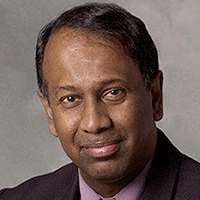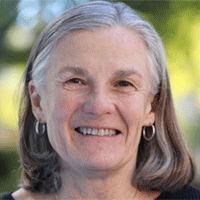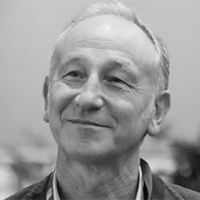
Dr. Ajit Yoganathan
Regents' Professor Emeritus
Associate Chair for Research
The Wallace H. Coulter School of Biomedical Engineering &
The Wallace H. Coulter Distinguished Faculty Chair in Biomedical Engineering
Georgia Institute of Technology & Emory University
Biography: Ajit P. Yoganathan is a Regents' Professor Emeritus at Georgia Tech and Emory University and serves as Associate Chair for Research in the Wallace H. Coulter School of Biomedical Engineering, where he also holds the Wallace H. Coulter Distinguished Faculty Chair in Biomedical Engineering. Widely regarded as a pioneer of modern cardiovascular fluid mechanics, he has spent more than four decades advancing the understanding of blood flow in the heart and great vessels, particularly in the design, evaluation, and clinical translation of prosthetic and bioprosthetic heart valves. His work blends engineering principles, imaging, and clinical collaboration, leading to transformative innovations in pediatric and adult cardiac surgery, congenital heart disease management, and computational modeling of cardiovascular function. Yoganathan’s laboratory has trained generations of researchers and clinicians and has established many of the standards used today for heart valve testing and evaluation. His contributions have been recognized with numerous awards and election to prestigious academies, solidifying his legacy as one of the most influential figures in biomedical engineering and cardiovascular biomechanics.

Dr. Melany Hunt
Dotty and Dick Hayman Professor of Mechanical Engineering
Caltech
Biography: Melany L. Hunt is the Dotty and Dick Hayman Professor of Mechanical Engineering at the California Institute of Technology (Caltech), where she has been a faculty member since 1988 and has served in major leadership roles including Executive Officer for Mechanical Engineering and Vice Provost. She earned her B.S. from the University of Minnesota and her M.S. and Ph.D. from UC Berkeley before establishing a research program focused on the mechanics and transport of multiphase systems—particularly granular and particulate flows, fluidized beds, porous media, and related energy applications. Widely recognized for both her scholarship and her educational leadership, Hunt received Caltech's Richard P. Feynman Prize for Excellence in Teaching and the Institute's CCID Agent of Change Award for contributions to diversity and inclusion. She also founded Caltech’s Center for Teaching, Learning, and Outreach, reflecting her long-standing commitment to mentorship and broadening participation in STEM.

Dr. Alfredo Soldati
Professor of Fluid Mechanics
Head of the Institute of Fluid Mechanics and Heat Transfer
Technische Universität Wien (TU Wien), Austria
Biography: Professor Alfredo Soldati, born in Livorno (Italy), is Universität Professor of Fluid Mechanics and Director of the Institute of Fluid Mechanics and Heat Transfer at Technische Universität Wien (since 2016), and Professor of Fluid Mechanics at the Università di Udine, Italy (since 2016, partial appointment).
He leads internationally recognized research on the transport, dispersion, and fragmentation of inertial particles, droplets, and bubbles in turbulent multiphase flows. His work integrates Direct Numerical Simulations (DNS) with high-precision optical experiments, advancing the fundamental understanding of turbulent transport, interfacial dynamics, coalescence, breakage, and phase change. His group has pioneered advanced phase-field numerical methodologies and developed cutting-edge multi-camera, laser-based experimental techniques capable of resolving sub-Kolmogorov particle dynamics and real-time interface deformation.
Professor Soldati holds major international leadership roles, including Rector of the International Center for Mechanical Sciences (CISM), Udine; co-President of the ICTAM 2028 World Congress; Member of the Executive Committee of the IUTAM Congress Committee; and Member of the Scientific Committee of BICTAM. He also serves as co–Editor-in-Chief of the International Journal of Multiphase Flow, contributing to shaping the global research agenda in fluid mechanics.